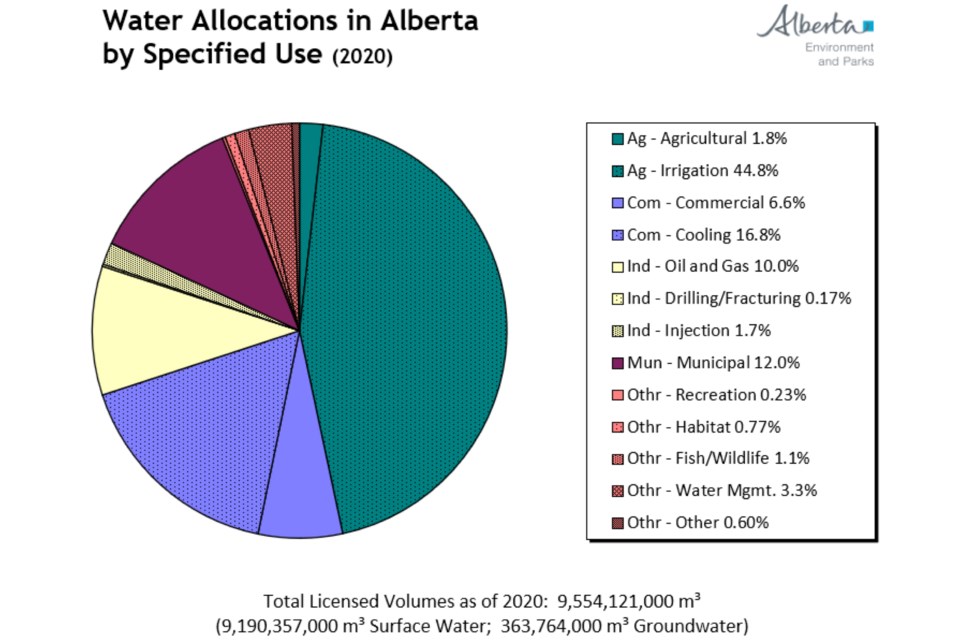MOUNTAIN VIEW COUNTY – Farmers in the region would like to know exactly where agriculture stands in terms of water use when compared with oilfield fracking, says Mountain View County Agricultural Service Board (ASB) member and councillor Peggy Johnson.
During a recent ASB meeting, Alberta Agriculture and Irrigation water engineer Pervez Sunderani made a presentation on drought management for farms and ranches.
During the appearance, Coun. Johnson asked Sunderani about the priority of water use at a time when the province is facing the possibility of severe drought.
“In our neighbourhood (Division 6, Eagle Valley/Westward Ho) this weekend, there was a temporary diversion licence where (an oil company) pumped 1.1 million gallons of water down hole for a frack,” said Johnson. “So that’s water that’s not going to be available now to farmers.
“Where is the priority of use under the Water Act? I thought that household was top priority and I thought growing food for people was next, but that doesn’t appear to be so. So where does industry fit in the priority list?”
Sunderani replied, “I would be hard-pressed to answer that question because that is a question that should go to the water policy group in Environment. I could provide you the names and contacts for the water policy group.
“It is a very good question and you are absolutely right. Hydro-fracking of water is no longer in the hydrological cycle for many, tens of thousands of years at a minimum. And hydro-fracking takes a lot of water, absolutely.”
In fracking operations, water is pumped at high pressure down bore holes to increase oil and/or gas production.
“We are into this era now where we never came across this before, where we now have competitive uses for water,” he said. “Policies need to be developed on highlighting priorities for these various uses.”
Johnson said, “In our neighbourhood, there is getting to be a growing controversy about where do farmers fit in the priority list because from all observations, we are nowhere close to the top of the list.
“And certainly a million gallons of water would grow quite a bit of food and water quite a few cattle; and you can pump it down holes in about 48 hours.”
Sunderani said he would provide the ASB with contact information for the water policy committee. Johnson said that information should be distributed to all ASB members as soon as it becomes available.
Planning and discussions have been underway regarding the possibility of extreme drought in the province this summer, with the provincial government saying stakeholders should be encouraged to take conservation measures.
The Alberta Energy Regulator produces the Alberta Water Use Performance Report annually to show how water is allocated and used to recover oil, gas, and oil sand resources.
Oil sand mining, in situ operations, enhanced oil recovery and hydraulic fracturing are covered in the report.
Because the volume of water used for conventional oil and gas drilling and operations is typically quite small, it is not discussed in the report. Water used for refining and processing activities is also not included in the report.
According to the Alberta Energy Regulator, 13 per cent of non-saline (fresh) water allocated to all industries in the province was allocated for the oil and gas extraction processes covered in the report in 2022 and only 21 per cent of the allocation was used.
In 2022, 17 per cent of the water used by the oil and gas industry covered in the report was non-saline, one per cent was alternative make-up water and 82 per cent was recycled water.
The oil sand mining sector drives water use intensity and accounts for 81 per cent of the non-saline water used in 2022 by the energy industry.



